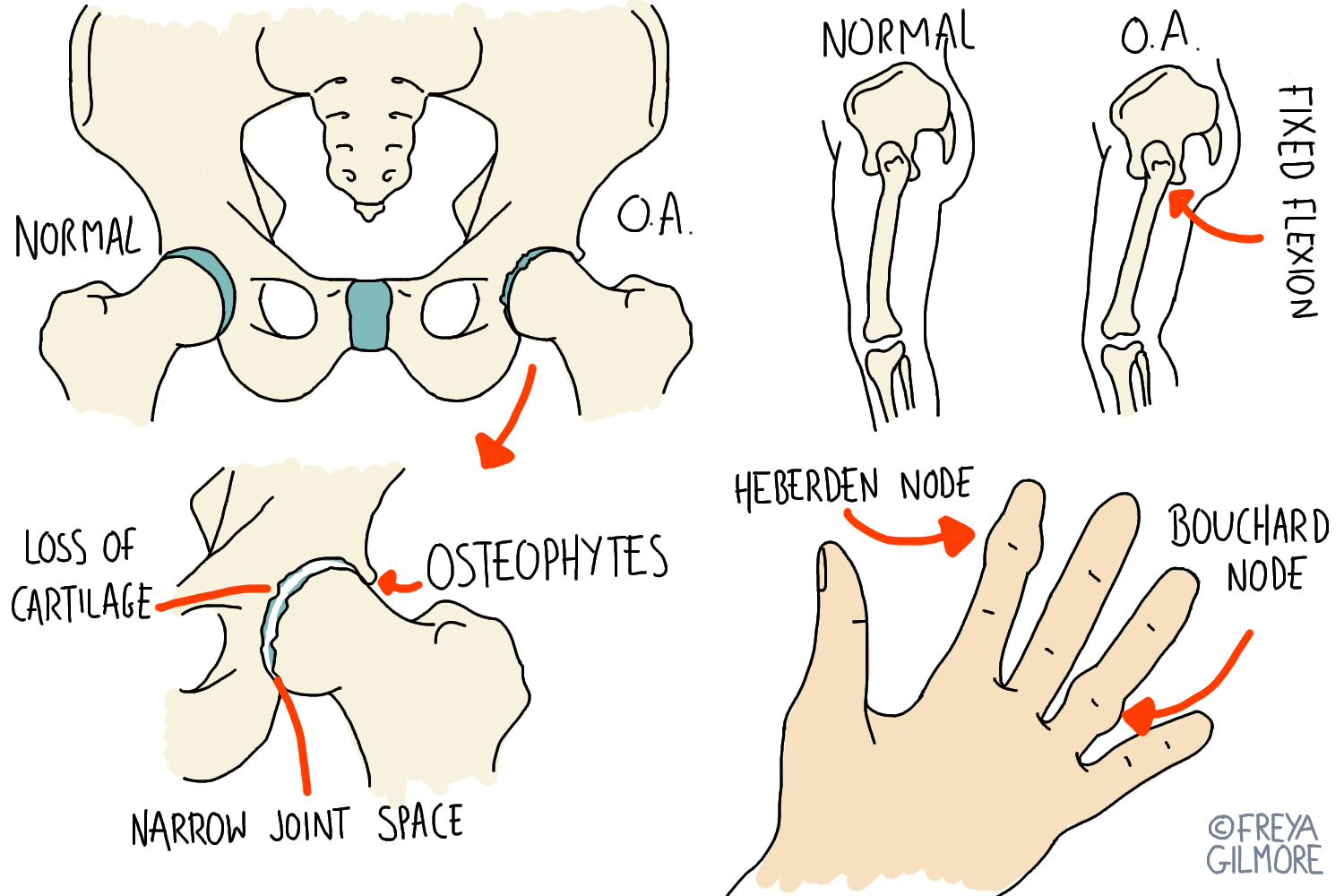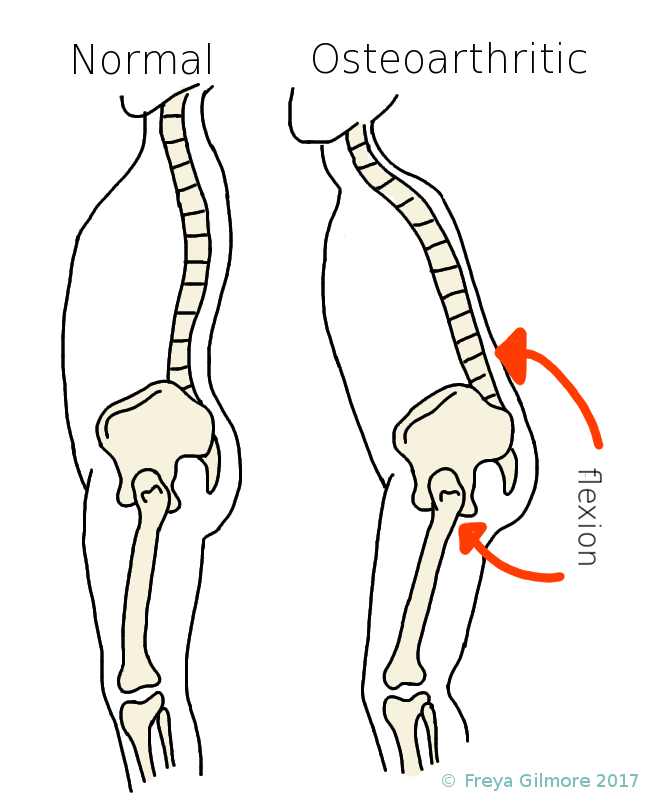06 January 2021
Hip and Knee Osteoarthritis

Osteoarthritis (OA) is the arthritis we generally consider to be "wear and tear", or more recently: "wear, tear, and repair". This more optimistic description refers to the body's constant work to fix itself.

The Phases of Osteoarthritis
Wear and Tear
OA affects cartilage. The earliest cause may be an injury, or simply a habit that leads to reduced movement through the joint. In hip arthritis, it is usually the backwards movement of extension that is lost first.
This means that the ball and socket joint are no longer gliding against each other fully. Some cartilage within the joint will always be compressed, whereas other areas will never be put under pressure. Cartilage has a very poor blood supply, so relies on this compression and release to exchange its waste products for nutrients- it essentially needs wringing out throughout.
When waste products build up, and nutrients fail to enter the tissues, the cartilage degrades. This leads to further discomfort and encourages you to use the joint even less, which causes the cycle to continue.
Repair
Just like insufficient movement leads to OA, adequate movement can help to heal it. Secondary effects of osteoarthritis include tightening of muscles on one side of the joint and weakness on the other. This imbalance allows you to hold a joint in position, and makes it harder to overcome it. Your osteopath can help here.
During treatment, your osteopath may move the joint for you, as well as working on those secondary effects. This sets you up for success by reducing all the factors that maintain the conditions for worsening OA.
You may be sent home with exercises between appointments to continue the improvement you're making and help you maintain that change long term.
With mobility improved, the poor-health cartilage begins to flush through its waste in exchange for nutrients again. This puts it in the best position to begin repairing itself.
The Effects of Hip and Knee Osteoarthritis
Your osteopath can help you manage the symptoms of hip or knee arthritis.

As mentioned above, extension is often lost early on with hip arthritis. This might happen without you even noticing at first, because the body adapts to avoid pain straight away. The typical compensation pattern is for the pelvis to tilt backwards, meaning you can still move your leg through the usual movement, but your hip no longer has to extend. For the pelvis to tilt, the lower back has to flatten. This can encourage the whole upper body to tilt forwards, resulting in a hunched upper back. But you still need to see forwards, so your neck overworks to raise your head.
All of these compensations combined lead to the classic "elderly" posture. With all of these different joints changing how they work, hip arthritis predisposes to other joint problems elsewhere.
Management
It's never too soon to see your osteopath for osteoarthritis. Because the body adapts to discomfort so readily, the first sign of arthritis may be someone else remarking on your changing posture.
Some people like to get regular osteopathic check ups, like you would with a dentist. That way the opportunity is there to spot those early postural changes before they have a significant effect.
Book now to nip it in the bud, or address ongoing arthritis.
Learn more
At Ilminster Osteopathy my goal is to help people achieve their goals whatever they may be. Watch our video to find out more.

